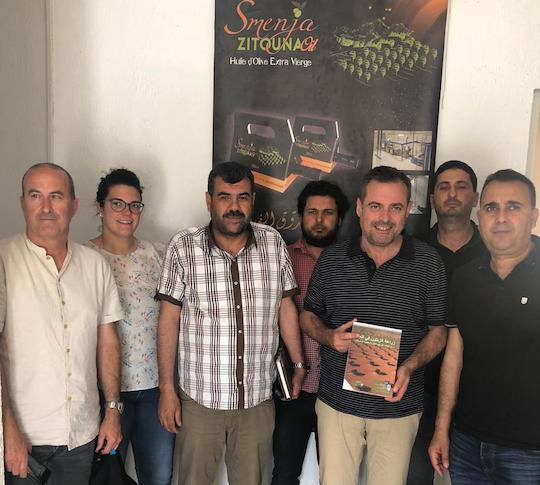On June 10th, the Arabic version of the manual «International Olive Growing» was presented in Tunisia. It was greatly received and recognized by the main operators of the sector in the country, as well as various personalities who were present.
The presentation coincided with the work done for one of the largest companies in the sector in Tunisia, aimed at transforming one of its farms into an efficient and ecological olive grove. The plot, with more than 1,000 ha, and with a current average production above 6 million kg of olive, will be transformed into an ecological one. This will be done in order to ensure proper management, for respectful growing and to increase the net income of the farm. For this work, a Juan Vilar and an Isabel Raya from Juan Vilar Consultores Estratégicos, SL were present along with Vicente Rodríguez, an expert in ecological olive growing.
Olive growing was introduced in Tunisia with the arrival of the Carthaginians and expanded with the Romans. During the Punic era it was a large exporting country, a position that it still holds today, exporting about 80% of its production.
Tunisia is the 4th highest country in regards to the area which is dedicated to olive groves. It is the second country with more area of olive groves in the world. It has 1,843,250 hectares of olive groves (15.88% of the world’s surface of olive groves) distributed throughout the Northern center of the country and along its entire east coast, which is on the Mediterranean coast.
Regarding productivity, it is well below the average. Their plots produce 128 kg/ha of oil and 673kg Olive/ha, which is the reason why they do not receive the silver medal in terms of production. The low productivity and size of their holdings, in turn make them have a low economic return. As a result, they are affected when oil prices fall due to excess supply.
This crop has 485,066 plots of olive groves. 3.8 ha are of medium size, 90.3% have a traditional cultivation system of planting markings that are more extensive with 1,664,470 hectares, 6.44% is intensive and only 3,26% of the surface is cultivated under modern, superintensive systems.
It annually produces close to one million tons of olives, which makes it the fourth highest olive oil producing country among producers and the fourteenth highest in terms of table olive production. Tunisia had already been a good olive oil producer in the Punic era of Carthage in the V century BC. The first signs of the presence of olive trees date to the time of the Carthaginians (Mohamed Hassine Fantar, 1987). They and the Phoenicians were responsible for spreading it all throughout the country and improving the cultivation and production techniques. After this, the Romans spread it to the territories they conquered.
As a product of our in-person tour of the country’s plantations, we estimate them to have a production close to 400,000t of oil for the coming campaign, which would double its average crop numbers.

